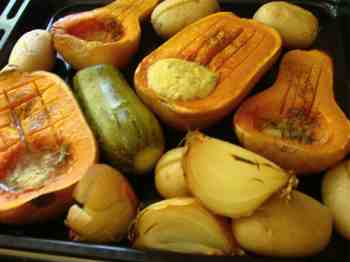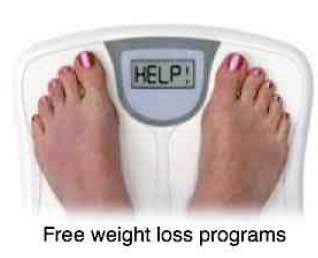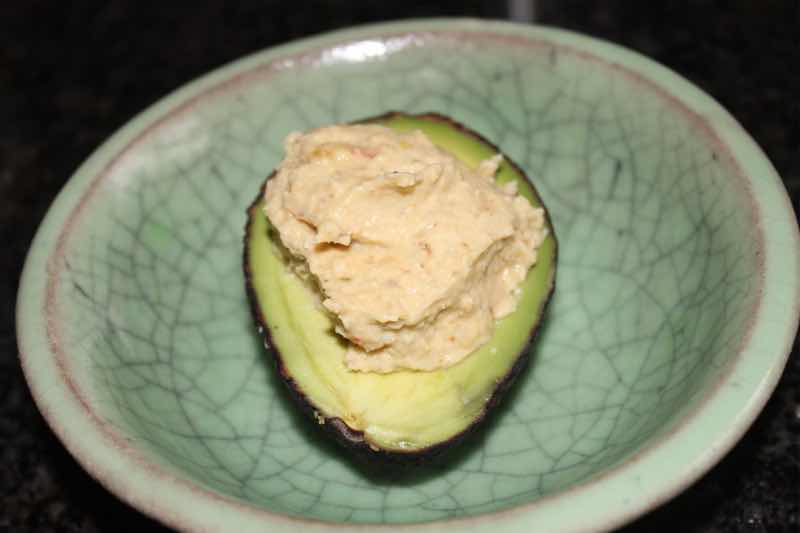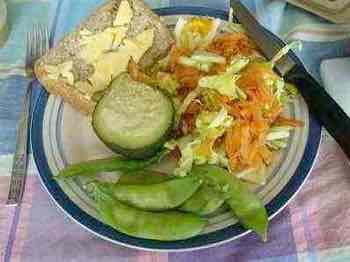- Bernard Preston homepage
- Starch
- Glycemic Index Calculator
Glycemic index calculator
Using a glycemic index calculator is the only sane way to keep your weight down.
If you are overweight you almost certainly became that way, not because you ate too much though that can be a problem occasionally but on account of choosing the wrong foods.

This page was last updated by Bernard Preston on 5th February, 2023.
I expect you are aware that only 5 percent of folk who diet, after one year have lost weight and many are actually heavier; it is frankly a total waste of time and energy and causes you considerable angst. They just don't work.
Decide today to forget about diets and instead to understand the concept of glycemic index; then you can hope to get those ugly pounds off permanently. More important you will have less pain and take fewer pills; it will improve your health dramatically.
Can you enjoy butternut and what about potatoes? Is there a difference between freshly-squeezed orange juice and OJ from a carton? Should rice, pasta and bread really be off the menu for ever?
These are important questions.
So what is the meaning of glycemic index? GI is a measure of how quickly a carbohydrate affects your blood sugar; and how much it makes it rise.
High glycemic index foods produce a startling rise in blood glucose. That is dangerous for your arteries so the pancreas squirts insulin into the body, storing that sugar as fat; and that is exactly what we do not want.
On the other low glycemic foods hardly affect the blood glucose, so there is only a minimal surge in insulin and little fat storage; within reason you can enjoy as much of them as you like.
Most diets boringly and ineffectively, measure and limit the number of calories you are consuming; that leaves you constantly hungry. GI goes about things quite differently; it determines the effect of carbohydrates on your blood sugar.
Instead of counting calories simply consider what a carbohydrate does to your blood sugar; grasp this concept and you will never have to mention that nasty four-letter word diet again.
You will still have to retrain your tongue because if you are obese, you got that way by eating high GI carbohydrates. Enjoy them only on high and holy days. Then you will steadily shed those unhealthy pounds that are causing pain and inflammation in your body; and fury when you step onto the scale.

Worse, adipose tissue becomes an organ that produces circulating
hormones in the body; that means you are far more likely to get malignant diseases
too. The obese for example are four times more likely to get breast cancer.
Glycemic index calculator
Glycemic index calculator means you no longer have to diet, only to understand; and obey your brain and deny the lust of the flesh.
The GI of a carbohydrate is measured in human trials; it is not something you can calculate yourself. On the other hand the glycemic load calculator can be done quite simply.
There is a simple formula that we use.
Very low GI carbs: 0 - 20
Low GI carbs: 21 - 55
Medium GI: 56 - 69
High GI: 70 +
Glycemic load calculator
Glycemic load (GL) = (GI x grams of carbohydrate) ÷ 100
hummus
 Avocado with a scoop of hummus.
Avocado with a scoop of hummus.Let us work out the glycemic load for hummus, for example. I enjoy a scoop on my salad every day; is it allowed and how fattening is it?
A scoop of hummus has about 30g of carbohydrate and has a GI of 6.
Glycemic load = (6 x 30)/ 100 = 1.8
What do the GL numbers mean?
- Low: less than 10
- Medium: 11 - 20
- High: 20+
Do not get too much into the details; it is boring. What it means is that your can pig out on hummus with a glycemic load of only 1.8; add as much as you like.
Here I have filled half an avocado with hummus. The extra fat and fibre lowers the GI even further, but obviously raises the glycemic load; it too has some starch.
Researchers have found that neither hummus, nor avocado, cause a significant rise in blood glucose.
The avo has very little carbohydrate and two-thirds of it is fibre anyway; it's one of the simplest way of getting extra food for the friendly bugs in the colon.

white rice
A cup of white rice has about 36 grams of carbohydrate and has a GI of 72.
Glycemic load = (72 x 36) / 100 = 26. That is in the very high range. No one should eat white rice; not ever.
Polishing of rice led directly to millions of deaths in Indonesia; until a very observant Dutch doctor's musing led to the discovery of the first vitamin. And it is still killing thousands today but now from obesity.
brown rice
Brown rice has more carbohydrate because of the fibre. A cup weighs about 50 grams, but has a GI of only 50.
Glycemic load = (50 x 50) / 100 = 25
So the GL of a cup of brown rice is much the same as that of white, but wait, there is a huge difference.
The GI of white rice is 72 which is high, causing a spike in insulin, and storage of fat; whereas that of brown is low at 50 and hardly causes a ripple in the blood sugar.
Brown rice in short is not fattening, whilst white certainly is; but they have roughly the same glycemic load.
To be honest, different sites give widely differing figures. Treat these exact numbers too with a pinch of salt. Grasp the principles; brown rice has a low GI and is not fattening, but eat enough and you will find it has a lot of calories.
Dr Nicola McKeown
Dr Nicola McKeown from the Friedman school's nutritional programme recommends a long grain brown rice.
She thinks it has advantages over a short grain white rice.
The glycemic index, a ranking from 0-100 used to indicate how rapidly a food with carbs can cause an increase in the blood glucose, is determined by the ratio of amylose to amylopectin.
The amylose content in long grain rice takes longer to digest than the amylopectin in short grain varieties.
She reports that wild rice, pearl barley and quinoa all have a GI under 55; that's low.
Rice which is cooked, cooled and then used in a rice salad has a lower GI.
Adding fat and legumes to the rice also lowers the GI.
Best advice
Forget glycemic load, just do not pig out on any starches, and scrupulously avoid refined carbohydrate if you want to cope with insulin resistance.
It is the glycemic index calculator that is important when it comes to weight loss.
Start by drawing up a list of the carbs you enjoy
Here is mine. Yesterday these are the carbohydrates I ate. You draw up your list.
Breakfast
- 1 slice low GI toast (GI 51)
- 1/4 tomato (in eggs Florentine) (GI 15)
- A glass of freshly squeezed orange juice. (GI 40)
Lunch
- Bowl butternut soup (55*)
- 2 slices low GI bread (GI 51)
- Scoop hummus on a salad (GI 6)
- 1 tsp raw honey (GI 55)
- 1 tsp mulberry jam (GI 51)
1 medium boiled potato (82). Glycemic load 21; not has high as white rice, but still in the range over 20; high and holy day food if you are obese.
A 150g white potato is mostly water, of course, but the starch, sugars and fibre making up the carbohydrate comes to about 26g.
GL white potato = (26g x GI of 82) / 100 = 21. In the high range.
Each day for a week, add to your list of common starches, getting the GI from glycemic index and load from Harvard Medical School.
Your rule of thumb if you are obese and determined to lose weight is enjoy high glycemic index foods only very occasionally when you go out to dinner; moderate you can eat regularly, but limit the total grams, and low GI you can have as much as you like within reason.
Do that and you will never have to use that ugly four letter word beginning with D again.
In all honesty the name of this page, glycemic index calculator is something of a misnomer; it is something you cannot do, but folk are typing in this keyword all the time. Rather, get the figures from the Harvard site.
A serious pitfall to avoid is a psychological condition called orthorexia. It is a fixation on what you eat, so serious that you will not dine out because your hostess may have slipped some mashed potato in to thicken the gravy; or butter to fry the onion for the vichyssoise soup, or some other avoidance strategy you are following.
When at home by all means follow the rules; if you find yourself turning down invitations because of what the food might contain, beware. It is potentially a serious problem, and you are on the verge. I call it the health-nut neurosis.
Frankly it is a fine line between choosing to avoid foods that you know are your downfall, and declining invitations to eat out because of what might be on the table, or hidden in the cooking. Leave your glycemic index calculator at home for a change, and enjoy yourself, but if necessary simply and politely say no thank you; but tomorrow it is business as usual.
Let them eat cake
“Let's just say you may regret that second piece of cake.
Oh my God. Regret cake? Whatever was about to happen must be truly evil.”
- Rachel Hawkins
Patello-femoral pain syndrome
Obesity inevitably causes knee arthritis; one type is called patello-femoral pain syndrome. Whilst it is treatable in our clinics, prevention is by far better than a cure.
Using your new-found knowledge from glycemic index calculator will save your bacon.
Strengthening the quadriceps muscle is vital; a process called arthrogenic inhibition makes it waste away. Worse, raised blood glucose damages the femoral nerve.
Knee arthritis within the joint proper is more difficult. In its early stages it is very treatable with chiropractic; but once it has established itself and holes have bored in the hyaline cartilage then only a serious commitment to weight loss, proper diet and a regular mobilisation will stay the surgeon's knife.
Understanding and using your glycemic index calculator, with help from Harvard Medical school for the figures will profoundly improve your health.
Best of all, you will never need to diet again.
If you follow this modified Banting diet you will find you won't feel continually famished; yes, it is based on the glycemic index calculator, with some added healthy fat. Astonishingly you will lose weight.
Orange juice GI

The GI of freshly squeezed orange juice with its pulp is low which means you can enjoy it, virtually without restriction. Note however, that OJ from a carton is ten points higher; that makes it on the verge of moderate which means you should restrict its intake; the glycemic load is significant.
These orange juice facts will tell all.
Bernard Preston
Bernard Preston is a semi retired DC with a passion for healthy living. Having got those unwanted pounds off using this glycemic index calculator you will find you can at least halve the medication you are taking. Tell me if I am wrong at contact.
Nutritious choice foods is what we are about.
Newsletter
Our newsletter is entitled "create a cyan zone" at your home, preserving both yourself and Mother Earth for future generations; and the family too, of course. We promise not to spam you with daily emails promoting various products. You may get an occasional nudge to buy one of my books.
Here are the back issues.
- Lifestyle and ideal body weight
- What are ultra-processed foods?
- Investing in long-term health
- Diseases from plastic exposure
- Intensive lifestyle management for obesity has limited value
- A world largely devoid of Parkinson's Disease
- The impact of friendly bacteria in the tum on the prevention of cancer
- There's a hole in the bucket
- Everyone is talking about weight loss drugs
- Pull the sweet tooth
- If you suffer from heartburn plant a susu
- Refined maize meal and stunting
- Should agriculture and industry get priority for water and electricity?
- Nature is calling
- Mill your own flour
- Bake your own sourdough bread
- Microplastics from our water
- Alternative types of water storage
- Wear your clothes out
- Comfort foods
- Create a bee-friendly environment
- Go to bed slightly hungry
- Keep bees
- Blue zone folk are religious
- Reduce plastic waste
- Family is important
- What can go in compost?
- Grow broad beans for longevity
- Harvest and store sunshine
- Blue zone exercise
- Harvest and store your rainwater
- Create a cyan zone at your home
Did you find this page interesting? How about forwarding it to a friendly book or food junkie? Better still, a social media tick would help.
- Bernard Preston homepage
- Starch
- Glycemic Index Calculator
Address:
56 Groenekloof Rd,
Hilton, KZN
South Africa
Website:
https://www.bernard-preston.com